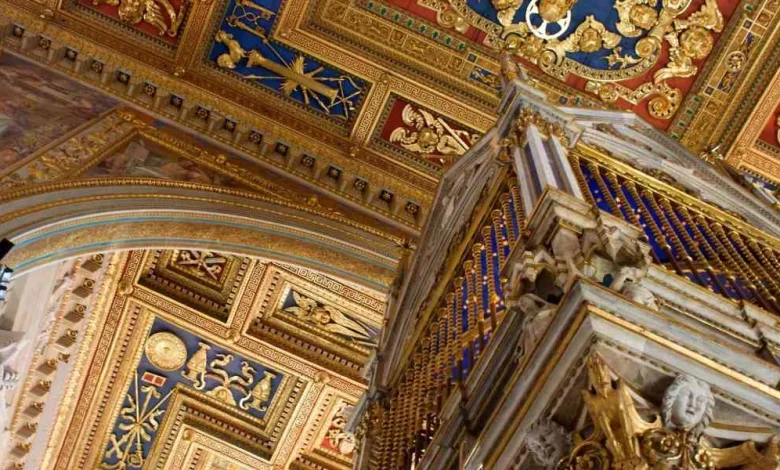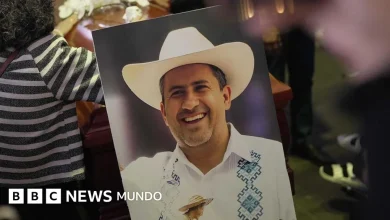This Sunday, Celebrate the ‘Safe Space’ Jesus Would Die To Protect: Our Church

The liturgical calendar stops counting down the Sundays until Advent this weekend to focus the whole Church on one thing: The power of sacred places.
Here are five takeaways about the Feast of the Dedication of the Lateran Basilica in Rome from Sunday Readings columns at this site and the Extraordinary Story podcast.
First: Jesus gets angry defending the Temple, because it is a unique source of freedom, encouragement, and friendship with God.
You can tell a lot from verbs. In the cleansing of the Temple scene from the Gospel of John this Sunday, you get some violent ones: Jesus “made a whip,” “drove them all out,” “spilled the coins” and “overturned the tables.”
Why was he so angry? Not to exact vengeance, but to correct vices: Priests and merchants were gouging a captive market for sacrificial animals and demanding fees to change money from various regions. What was supposed to be a place of pilgrimage and self-giving had become a place of profiteering and self-seeking. Worse, it was all happening in the part of the Temple set aside for Gentiles to worship, crowding them out.
But most importantly, it was because Jesus loved the Temple, and this corruption twisted what he loved into something it should never be.
Jesus, in fact, gives three reasons for why this makes him so upset — reasons the Church recommends to us today by putting this Gospel in front of us as we celebrate a church building in Rome.
Second: Jesus argues for the freedom that should reign in sacred spaces.
In the Gospel, Jesus complains that we must not make “my Father’s house a marketplace.”
From his time to ours, places of worship have been true “safe spaces,” gathering places that belong neither to the iron fist of the state nor the grasping fingers of the marketplace.
As St. John Paul II put it, “The individual today is often suffocated between two extremes represented by the marketplace and the state.” When this happens, “People lose sight of the fact that life in society has neither the market nor the state as its final purpose, since life itself has a unique value which the state and the market must serve.”
We need places that shelter us from the state, where we are a number, and from the marketplace, where we are a dollar sign. The deepest private “safe space” we have is our home, our family’s house; and the highest public “safe space” we have is our church, our Father’s house.
If you have been to a Vatican basilica, you have seen how sacred spaces are guarded. As you approach a basilica such as St. John Lateran, you pass by religious goods sellers and security checkpoints — but once you are inside, no one tries to test or sell you.
The Lateran Basilica is the most powerful Catholic symbol of the Church’s separation from the state and marketplace. While the Vatican City State, where St Peter’s is, remains the place where the Pope has (small) temporal power, it is the Lateran basilica, not St. Peter’s, that houses the papal cathedra (chair), from which he is said to speak ex cathedra on doctrines of faith and morals. That makes it the seat of his spiritual authority and it features statues of the apostles with symbols of their martyrdom at the hands of the state, along with relics of Sts. Peter and Paul, founders of the Holy See, to completing the lesson.
And the very name of the basilica shows its departure from the marketplace. The name “Lateran” refers to the wealthy aristocrats who once owned this land, before their wealth passed from the marketplace to sacred use.
Third: Jesus protects the Church as a place of encouragement, where he gives us piety and fortitude to strengthen us.
“Zeal for your house will consume me,” Jesus cries out. He is quoting Psalm 69, which he cited more than once to characterize how religious people turn against God — and against his anointed one. Jesus considers zeal for the place of worship as a litmus test for true devotion.
This Gospel takes place at Passover, but in November another Temple occasion might capture our imagination better. The Jewish Feast of Booths was an autumn harvest festival that was like Thanksgiving, the Fourth of July, and World Youth Day, all in one. The people celebrated it by building tentlike structures all around the Temple and sleeping under the stars, remembering how God delivered their forefathers.
During the festival, the priests would pour water from the pool of Siloam over the altars, which would make water pour out of the Temple’s exterior ducts, and, at night, light giant candelabras and process with torches. The wet Temple stones must have glistened in the torchlight like the heavenly Temple in our First Reading, where Ezekiel says “The angel brought me back to the entrance of the temple and I saw water flowing out.”
You can imagine people who had an experience like that praying Psalm 122 with gusto: “I rejoiced when I heard them say: Let us go to the house of the Lord!”
Catholics flock to St. John Lateran in jubilee years (like 2025) with the same energy. The basilica is called “Mother of All Churches,” and is dedicated to both St. John the Baptist and St. John the Evangelist, but primarily, to Christ the Savior himself. Its titular feast is the Transfiguration — where Christ shone like the Temple by torchlight, fortifying his apostles for the tough days ahead, as his Church fortifies us today.
Fourth: Jesus’s final argument for cleansing the Temple is that his body is the new Temple.
“Destroy this Temple and in three days I will raise it up,” he says — referring to his body, John adds.
The Temple was the dwelling place of God with mankind, where his people walked with him like friends. But Christ himself is “greater than the temple,” the ultimate Emmanuel, God-with-us. After the Resurrection, John realized, there is a new place God dwells with us: the body of Christ, the company of those who partake in the Eucharist, uniting with him in the Church.
The Lateran Basilica demonstrates this truth powerfully. Near the basilica are the Scala Sancta (Holy Stairs), wooden steps that encase white marble steps which, according to tradition, Jesus Christ climbed during his passion. And in the basilica itself a relic is venerated as wood from the table on which Jesus Christ consecrated the first Eucharist.
That means the Lateran Basilica presents us with both the place where the Temple of his body was destroyed, at his passion, and the place where it was rebuilt, when he ordained the first priests and consecrated the Blessed Sacrament. Our participation in Christ’s sacrificial death and resurrection, through baptism and communion, is what allows St. Paul in the Second Reading to ask: “Do you not know that you are the Temple of God, and that the Spirit of God dwells in you?”
Fifth: So celebrate the Lateran Basilica, and every church, today — especially the one that saved you.
Today, Catholics worldwide are as grateful as Jesus was for the freedom, encouragement and friendship which God provided in sacred spaces.
We celebrate our freedom in the ancient custom for this day of visiting the baptismal font in the church where we were baptized. If you can’t do that, your current church’s baptismal font will do as a reminder of the place where you were freed from slavery to the devil — and transferred from citizenship on earth alone, to citizenship in the heaven of flowing waters and abundant life that Ezekiel describes in our First Reading.
We celebrate the encouragement the Church gives us by making our own what Sunday’s Psalm says about the Temple, and now the Church: “We fear not, though the earth be shaken and the mountains plunge into the depths of the sea,” because our one foundation is Jesus Christ, Our Lord.
And we celebrate friendship with God that is so powerful, that anywhere two or three gather in his name, he is in the midst of us — especially around every altar where we participate in his passion through the Mass, and from every tabernacle where we draw close to his Real Presence in the Eucharist.
Step forward in communion this Sunday, knowing that you are in the loving arms of your mother, the Church, safe from the selfish grasp of worldly powers.
Image: Jiuguang-Wang-Flickr.





